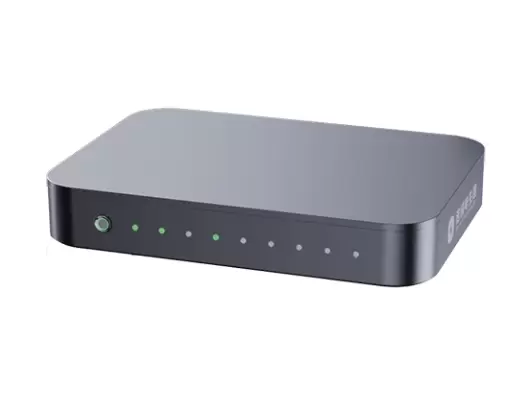Understanding Surface EMG Systems: A Comprehensive Overview
Surface electromyography (sEMG) systems have become essential tools in both clinical and research settings, allowing for the non-invasive assessment of muscle activity. These systems provide valuable insights into neuromuscular function, making them invaluable for rehabilitation, sports science, and surgical monitoring. In this article, we will explore the key features, applications, and benefits of surface EMG systems, with a focus on the advanced capabilities of the NCC Cynapse System.

What is Surface EMG?
Surface EMG is a technique used to record electrical activity produced by skeletal muscles. By placing electrodes on the skin's surface above the muscles of interest, sEMG systems can capture bioelectric signals that reflect muscle activation patterns. This non-invasive method is widely used for various applications, including assessing muscle function, diagnosing neuromuscular disorders, and guiding rehabilitation programs.
Key Features of NCC Cynapse System
The NCC Cynapse System is a professional intraoperative neuro-monitoring system designed to enhance surgical safety and effectiveness. Here are some of its standout features:
- Multi-modal Measurement: The system supports various measurement modalities, including EMG (electromyography), MEP (motor evoked potentials), SEP (somatosensory evoked potentials), EEG (electroencephalography), BAEP (brainstem auditory evoked potentials), and VEP (visual evoked potentials). This flexibility allows for comprehensive monitoring during surgeries.
- Simultaneous Signal Acquisition: The NCC Cynapse System can acquire and record up to 16 channels of surface EMG signals simultaneously. This capability enables clinicians to monitor multiple muscle groups at once, providing a detailed overview of neuromuscular function.
- Neuromuscular Electrical Stimulation: The system can implement neuromuscular electrical stimulation by setting specific stimulation parameters. It allows for targeted stimulation of up to 16 different areas of the body simultaneously, facilitating effective rehabilitation protocols.
- Wireless Connectivity: The wireless feature enhances usability in clinical settings, allowing for greater mobility and flexibility during procedures.
- User-Friendly Interface: The device provides voice and text prompts to indicate its operational status, making it easy for operators to navigate through various functions without confusion.
Applications of Surface EMG Systems
Surface EMG systems have a wide range of applications across various fields:
1. Clinical Rehabilitation
In rehabilitation settings, surface EMG is used to assess muscle activation patterns and monitor progress in patients recovering from injuries or surgeries. This data helps therapists tailor rehabilitation programs to individual needs.
2. Sports Science
Athletes and coaches use surface EMG to analyze muscle performance during training and competition. By understanding muscle activation patterns, they can optimize training regimens and improve performance while reducing injury risk.
3. Intraoperative Monitoring
The NCC Cynapse System is particularly valuable in surgical environments where real-time monitoring of nerve function is critical. By assessing neuromuscular integrity during surgery, surgeons can minimize the risk of nerve damage and ensure better patient outcomes.
4. Research Applications
Researchers utilize surface EMG systems to study muscle physiology, biomechanics, and neuromuscular control mechanisms. This research contributes to advancements in medical science and technology.
Benefits of Using Surface EMG Systems
- Non-Invasive: Surface EMG provides a safe way to assess muscle activity without the need for invasive procedures.
- Real-Time Data: The ability to capture real-time data allows for immediate feedback during therapy or surgical procedures.
- Enhanced Precision: With multiple channels of data acquisition, clinicians can obtain detailed insights into muscle function, leading to better-informed decisions.
- Improved Patient Outcomes: By monitoring neuromuscular function effectively, healthcare providers can enhance rehabilitation strategies and surgical safety.
Conclusion
Surface EMG systems are powerful tools that provide critical insights into muscle function across various applications. The NCC Cynapse System stands out with its advanced features and flexibility, making it an ideal choice for both clinical and research environments. By leveraging the capabilities of surface EMG technology, healthcare professionals can improve patient care, enhance athletic performance, and contribute to valuable scientific research.
For more information on how the NCC Cynapse System can benefit your practice or research efforts, feel free to contact us at NCC! We are committed to providing innovative solutions that support your goals in neuromonitoring and rehabilitation.
- Art
- Causes
- Crafts
- Dance
- Drinks
- Film
- Fitness
- Food
- Παιχνίδια
- Gardening
- Health
- Κεντρική Σελίδα
- Literature
- Music
- Networking
- άλλο
- Party
- Religion
- Shopping
- Sports
- Theater
- Wellness


